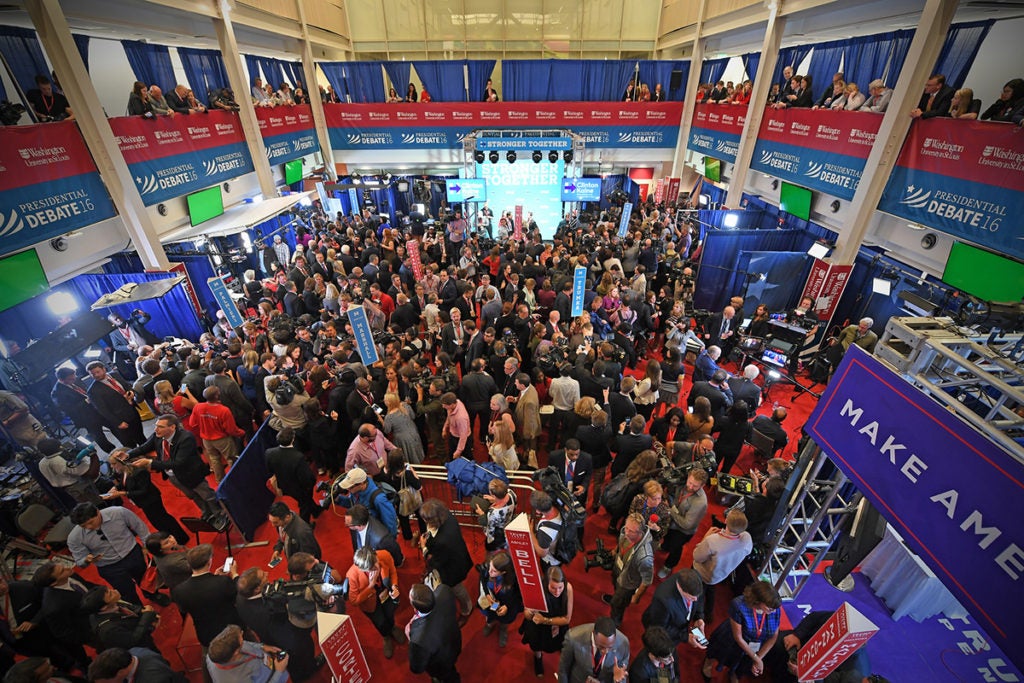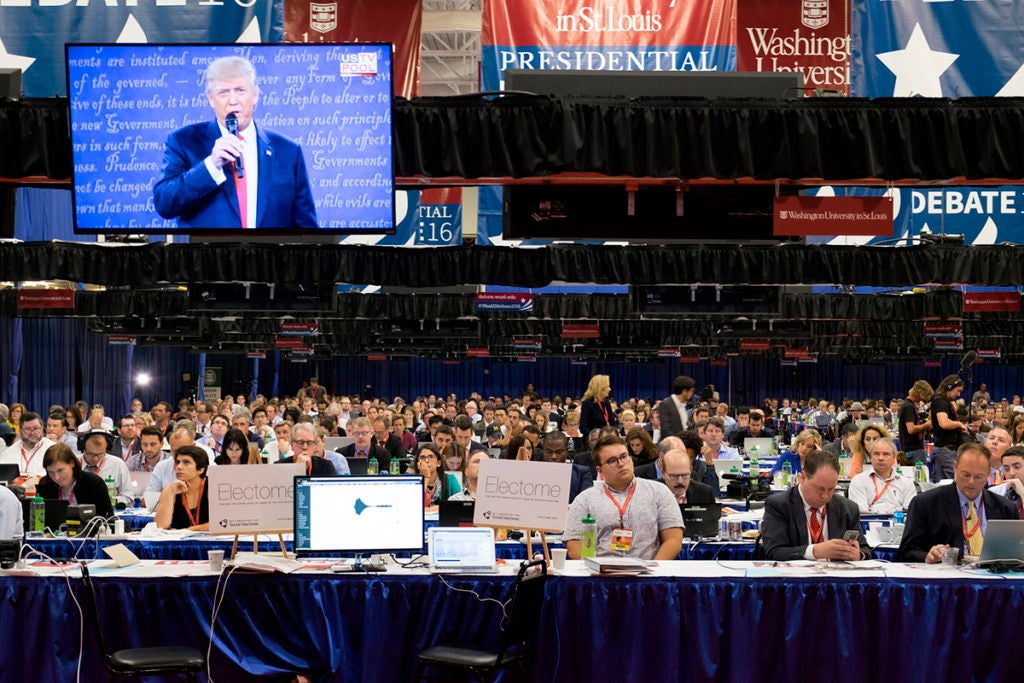
Journalists jostle for space in Spin Alley after the presidential debate at Washington University Oct. 9, 2016. (Photo: James Byard/Washington University)
There’s an old saying – a rule, actually – in journalism: No cheering in the press box.
Literally, it means sports reporters covering an event are supposed to maintain decorum and not cheer openly for or against either team in a contest. But it’s applied to other journalistic venues as well. At a presidential debate, for example, journalists are expected to remain objective, professional and dispassionate.
But when the unexpected happens, sometimes all bets are off — such as in the opening moments of the presidential debate Sunday, Oct. 9, at Washington University in St. Louis. As Hillary Clinton and Donald J. Trump took the stage for the town hall-style debate in the university’s Field House in the Athletic Complex, the candidates refused to shake hands.
The display of hostility — the first of several such moments — prompted audible gasps from hundreds of journalists gathered to watch the debate on TV screens in the Sumers Recreation Center, next door to the Field House. And that was only the first interaction to remind journalists that Sunday would be far from a typical day at the ball yard.
“This campaign is very interesting,” said Vinicius Neder, a reporter with O Estado de S. Paulo, a national newspaper in Brazil. Neder, one of 10 international reporters chosen as 2016 World Press Institute (WPI) fellows, noted the political polarization he had observed and how it compares to similar scenarios playing out elsewhere in the world. As an outsider looking in at the United States, he said, “we’re more used to seeing a very balanced and stable democracy.”
The United States’ role on the world stage is of considerable interest to international media. Of the estimated 2,000 journalists who came to St. Louis for the debate, dozens came from other parts of the world. Other countries represented in the WPI group, for example, were Argentina, Australia, Bulgaria, China, Finland, Mexico, Nigeria, Tunisia and Ukraine.
Immediately after the debate, at least one of the WPI fellows eagerly sought an opening along a rail overlooking Spin Alley, the area where journalists converge en masse with the candidates’ surrogates. Down below, where elbowroom was nonexistent and knocks to the head with television cameras a constant risk, the surrogates “spun” debate narratives in favor of their candidates.
Washington University’s Spin Alley may have been even more jammed than is typical due to Trump’s unexpected Spin Alley appearance following the first debate Sept. 26 at Hofstra University. The possibility of a second Trump pop-in triggered a battle for prime camera and microphone positions. But the candidate didn’t show.
Instead, a roster of Trump surrogates, including former New York City mayor Rudy Giuliani and reality-show star Omarosa Manigault, now director of African-American outreach for Trump, stumped for the Republican candidate. Meanwhile, Democratic National Committee Chairwoman Donna Brazile and U.S. Sen. Claire McCaskill, D-Mo., were among those offering statements in favor of the Democratic candidate.
Into the night, journalists busily filed stories, gave live TV and radio reports, tweeted photos and observations, and interviewed representatives of the candidates in makeshift studios lining Spin Alley. On Oct. 19, many of the same journalists will converge at the University of Nevada, Las Vegas, for one final debate.

Journalists monitor the debate while working in the media filing center. (Photo: Sid Hastings/Washington University)